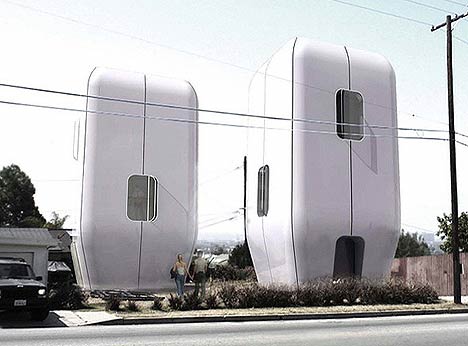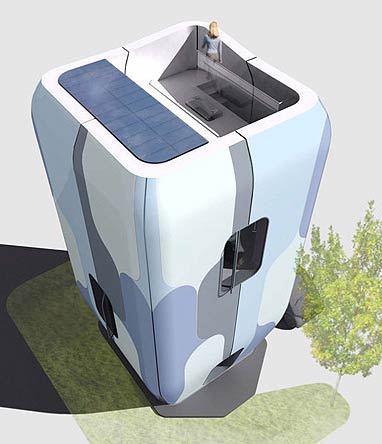Posts Tagged ‘digital’
Fallon Brainfood: The Mobile 10
Posted on: November 6, 2008
- In: blogs | business | planning | technology
- Leave a Comment
Today I sat in on my 1st Fallon Brainfood presentation, which focused on mobile media. While planner Aki Spicer and producer Marty Weatherall scooped us on the ever-growing usage and utility of mobile media/marketing, viewers (live and virtual) sent in photos which were added to the Fallon Brainfood Mobile gallery. You can still send in pics by texting/emailing to Fallon@fanchatter.com. Check them out here. For the live presentation, watch here. You can also find the slideshow there or on SlideShare. Click on Spock!
e-Motions by Tania Falcao
Posted on: October 23, 2008
- In: art | beauty | design
- Leave a Comment
What emotions do you think or feel are being represented here? Experience this e-Motions motion graphic by Tania Falcao. e-Motions states: Animation is an art form which brings to life our imagination, creates illusions an mimics actions. “Through this form of expression, based in motion, is possible to give form to sensations and feelings showing physical reactions and facial expressions. The goal is to present emotions and sensations through the expression of drawing and 2D digital animation technology.” via 2Modern Design Talk.
Lube Experts Ask “What is Sexy”?
Posted on: January 28, 2008
- In: branding | relationships | sex
- Leave a Comment
What is sexy? Have fun exploring ideas of sexyness with K-Y Brand. This is a fun place to share your quick thoughts on the concept of “sexy”. Of-course, it’s no fun giving if you’re not receiving, so don’t be afraid to play around with the swirling sexy phrases – here you can see what others have offered up.
What is most interesting is the filtering tool to the left of the phrases. By de-selecting gender and moving the age markers around, you get a rough idea of who thinks what is sexy. I’m curious to know how many people 70+ have shared their thoughts. (Maybe you should send this to your grandma?) I’m most interested in the male 20-30 demographic, so I turned the women off and adjusted the age marker. A few definitions of sexy appeared: naked on an elephant, naked bus driving, naked jumping jacks. And corndogs. At least K-Y can confidently infer that men think nakedness is sexy. Hah. Jokes aside, there’re some sweetly unique responses as well.
I appreciate the fresh and fun vibe of this interactive experience. Unlike a lot of brands, K-Y isn’t telling us how to think or act, what to buy, or what kind of person we should be. As they say under the “Sexy Is” rollover, our definition of sexy is much more interesting than theirs (true), and by collectively sharing our own “sexy mantras”, we can help create a create a new attitude of what’s hot.
So what is sexy?
- In: design
- 2 Comments
In a city like Minneapolis, where space can be found and design culture is not quite edgy enough to be avant-garde, I can’t see architect Neil Denari’s house for useful + agreeable fitting in. (However, it would be an inspiring touch if I ever saw something like this perched delicately on a corner in the Warehouse District or Northeast Minneapolis.) The vertical abode is “a pre-designed mini hi-rise that has been conceived for a variety of uses in different climates. The u+a house can be used in the context of small-lot or cluster housing, remote vacation property and rooftop penthouses among other possibilities”, via MoCo Loco.
Here you see the house in a potential setting, the view from the top (complete with terrace), and a cutaway look at the interior. One comment on MoCo Loco questions the “extreme vertical approach”. These images may not represent the entirety of the design, so it is difficult to see where the living space resides. I also do not see the bathroom, but assume it’s there somewhere. The lower level seems to be the office, though perhaps it’s multi-use? I appreciate the smooth starkness of the exterior (what is it made of? how mobile is it?) but wonder how cozy it is. Even in small spaces, I believe warmth is important.
The house represents “smart design = luxury” according to Denari. As a space-saver, it gets points for being smart. And any time design serves a specific purpose (here, saving space), there is a certain kind of luxury being offered.
Upon visiting useful + agreeable, I find myself curious as to what they do, and how they came up with their name. I’m drawn to companies/agencies/etc that have a story behind their name. It says so much more about their attitude and culture vs. those who go only by the founding partners’ names.
useful + agreeable defines themselves as a smart luxury, travel and design broadband tv station and publication. The group’s name has roots in the philosopher Voltaire’s Candide who sought useful and agreeable things found in the world. u + a began as a magazine, then went into travel guides and eventually the broadband tv station. After poking around for a bit, I watched clips of various hotels, resorts, wine and fashion under “tv”. These were all nice and pretty, but for now I wonder what exactly is the real tie to showcasing these apparently ‘useful’ and ‘agreeable’ things, and what the company aims to do in the long-run? When I think of these words, related to design, travel, and even luxury goods, I immediately think of sustainability and the idea of green as the new luxury. Founder James Culham, aims to present a useful + agreeable world. Fair enough. But what does this really mean? Who is his main audience? How does he choose the content? What is it based on? Is it all for the sake of enjoying some design eye candy, or is there something deeper going on? Maybe I should dig in and ask him myself?





